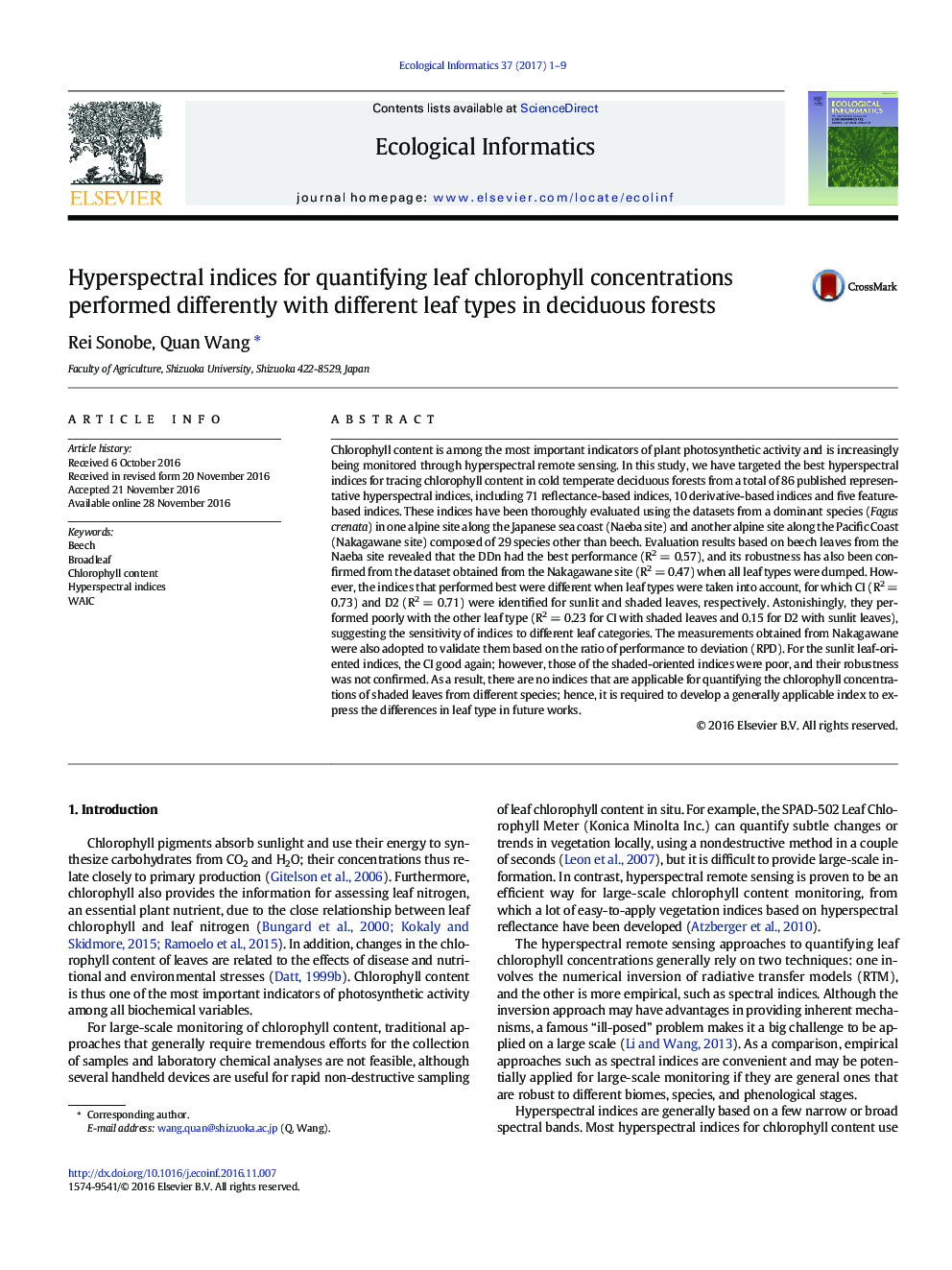| Article ID | Journal | Published Year | Pages | File Type |
|---|---|---|---|---|
| 5741955 | Ecological Informatics | 2017 | 9 Pages |
â¢86 published hyperspectral indices were evaluated for quantifying chlorophyll concentrations.â¢Leaf-type information plays a critical role in the applicability of these indices.â¢Sunlit leaf type-oriented indices generally use the reflectance at the wavelength of 680 nm.â¢Shaded leaf type-oriented indices are generally based on the reflectance longer than 710 nm.
Chlorophyll content is among the most important indicators of plant photosynthetic activity and is increasingly being monitored through hyperspectral remote sensing. In this study, we have targeted the best hyperspectral indices for tracing chlorophyll content in cold temperate deciduous forests from a total of 86 published representative hyperspectral indices, including 71 reflectance-based indices, 10 derivative-based indices and five feature-based indices. These indices have been thoroughly evaluated using the datasets from a dominant species (Fagus crenata) in one alpine site along the Japanese sea coast (Naeba site) and another alpine site along the Pacific Coast (Nakagawane site) composed of 29 species other than beech. Evaluation results based on beech leaves from the Naeba site revealed that the DDn had the best performance (R2Â =Â 0.57), and its robustness has also been confirmed from the dataset obtained from the Nakagawane site (R2Â =Â 0.47) when all leaf types were dumped. However, the indices that performed best were different when leaf types were taken into account, for which CI (R2Â =Â 0.73) and D2 (R2Â =Â 0.71) were identified for sunlit and shaded leaves, respectively. Astonishingly, they performed poorly with the other leaf type (R2Â =Â 0.23 for CI with shaded leaves and 0.15 for D2 with sunlit leaves), suggesting the sensitivity of indices to different leaf categories. The measurements obtained from Nakagawane were also adopted to validate them based on the ratio of performance to deviation (RPD). For the sunlit leaf-oriented indices, the CI good again; however, those of the shaded-oriented indices were poor, and their robustness was not confirmed. As a result, there are no indices that are applicable for quantifying the chlorophyll concentrations of shaded leaves from different species; hence, it is required to develop a generally applicable index to express the differences in leaf type in future works.
